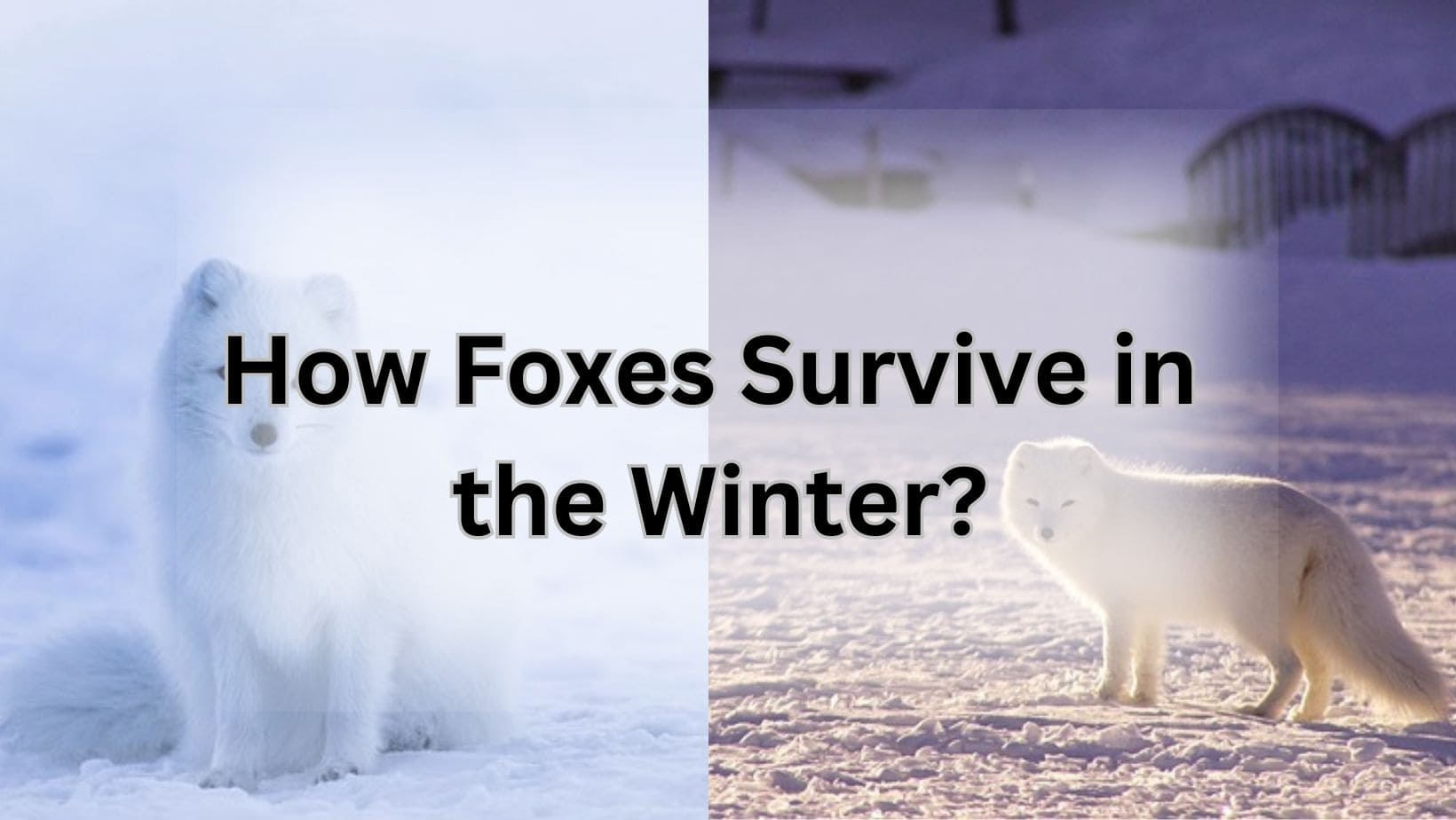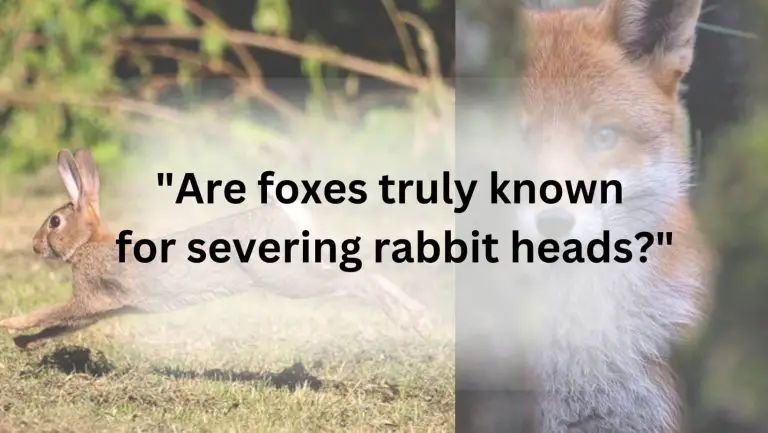How Foxes Survive Winter: Canid Expert Reveals Secrets!

How Foxes Survive in the Winter
Ever wondered how those sly foxes manage to thrive in the chilly winter months? Well, let me spill the beans on their cool survival strategies! These cunning creatures have a few tricks up their furry sleeves to brave the cold and snowy weather.
Thick Winter Coat
One of the key ways foxes stay warm during winter is with their thick, luxurious fur coats. These fluffy coats provide excellent insulation against the cold, keeping the foxes cozy even when the temperatures drop. It’s like wearing a snuggly winter jacket all the time!
Increased Food Consumption
During the winter, food can be scarce for our foxy friends. To combat this, foxes ramp up their food consumption, storing extra calories to keep them going through the lean times. It’s like stocking up on snacks for a movie marathon!
Lower Metabolic Rate
Another nifty trick foxes use to survive the winter is lowering their metabolic rate. By slowing down their bodily functions, foxes conserve energy and stay warm without needing to eat as much. It’s like putting your body on energy-saving mode!
So, next time you see a fox frolicking in the snow, remember these clever winter survival strategies that help them thrive in the cold. Stay tuned for more foxy facts and tales of wild canid adventures!
Shelter and Denning Behavior
When the winter chill hits hard, foxes are not ones to curl up and hibernate like a bear. These crafty creatures have some tricks up their furry sleeves to survive the icy temperatures. Let’s dive into their denning behavior and shelter strategies that help them brave the cold.
Finding Warm Dens
Foxes are like real estate agents in the winter, constantly on the lookout for the perfect cozy den to call home. They seek out sheltered spots like hollow logs, burrows, or even abandoned buildings to escape the biting cold. These dens provide insulation from the frosty air and help them conserve body heat.
Sharing Dens with Other Foxes
Forget about “my space” and “your space” drama – foxes are all about communal living during the winter. They often share dens with family members or other foxes to huddle together for warmth. It’s like a cozy sleepover party, but with more fur and fewer pillow fights.
Creating Insulating Nests
Just like humans fluff up their blankets for extra warmth, foxes are experts at creating insulating nests. They gather leaves, grass, and other materials to line their dens and make them extra snug. It’s like a DIY project for survival – fox edition!
### Hunting Strategies in Winter
Winter is no walk in the park for our furry friends, the foxes. But fear not, these clever creatures have some tricks up their fluffy sleeves to survive the cold season. Let’s dive into their hunting strategies that help them brave the winter chill.
#### Storing Food for Later
When the snow blankets the ground and food becomes scarce, foxes don’t panic. Oh no, they are prepared! These cunning critters have the foresight to stash away extra food during the bountiful seasons. Just like a squirrel hoards nuts, foxes hide away their goodies in secret spots to ensure they have a snack when times get tough.
#### Hunting Small Mammals
Foxes are stealthy hunters, especially in the winter. They use their keen senses to track down small mammals like voles, mice, and rabbits. With their sharp eyes and ears, they can pinpoint their prey even under a blanket of snow. Once they lock onto their target, it’s game over for the unsuspecting critter.
#### Scavenging for Food
When all else fails, foxes turn to their scavenging skills to fill their bellies. They are not picky eaters and will feast on carrion, fruits, insects, and even garbage if needed. Their adaptability and resourcefulness make them true survivors in the harsh winter landscape.
So, next time you see a sly fox trotting through the snow, remember that it’s not just a pretty face. These clever creatures have honed their hunting strategies over generations to thrive in the winter wonderland. Let’s tip our hats to these furry survivors!
How do foxes survive in the winter?
When the cold winds blow and the snow starts to fall, you might wonder how those sly foxes manage to survive the harsh winter months. Well, fear not, my fellow wildlife enthusiasts, for these cunning creatures have some tricks up their furry sleeves to brave the cold and snowy season.
Following Prey Migration
One clever strategy that foxes use to survive in the winter is by following the migration patterns of their prey. As the temperature drops, small mammals like mice and voles move to lower elevations in search of food. Foxes, with their keen sense of smell and sharp hunting skills, track down these critters and feast on them to stay nourished during the winter.
Moving to Lower Elevations
Another way foxes adapt to the winter chill is by moving to lower elevations where the snow is not as deep and the temperatures are milder. By finding shelter in dens or under thick vegetation, foxes can stay warm and protected from the harsh winter elements while still being able to hunt for food.
Utilizing Human Habitats
Lastly, foxes are not shy about taking advantage of human habitats to survive the winter. They may scavenge for food in garbage cans, raid bird feeders, or even seek shelter in barns or sheds. While this may not be the most natural way for foxes to survive, it certainly helps them make it through the winter months when food is scarce.
Behavioral Changes in Winter
Increased Socialization
When the temperatures drop and the snow starts falling, foxes don’t hibernate like some other animals. Instead, they increase their social interactions with other foxes. It’s like they’re throwing a winter party in the woods! By sticking together, they can share body heat and work together to find food in the cold winter months.
Decreased Activity Levels
Foxes are known for their agility and speed, but in the winter, they tend to slow down a bit. They conserve their energy by reducing their activity levels, which helps them survive when food is scarce. It’s like they’re putting themselves on a winter break, lounging around and conserving their energy for when they really need it.
Adjusting Sleep Patterns
During the winter, foxes adjust their sleep patterns to adapt to the shorter days and longer nights. They may spend more time sleeping or resting in their cozy dens to stay warm and conserve energy. It’s like they’re hitting the snooze button on their alarm clock and snuggling up for a long winter’s nap.
In the winter, foxes have some tricks up their furry sleeves to survive the cold weather. By increasing socialization, decreasing activity levels, and adjusting their sleep patterns, these clever creatures are able to weather the winter storms and come out stronger on the other side. So next time you see a fox frolicking in the snow, remember that they’ve got some cool survival strategies up their sleeves!
Survival Instincts and Skills
Have you ever wondered how those sly foxes manage to survive the harsh winter months? Well, let me tell you, these cunning creatures have some impressive survival instincts and skills up their furry sleeves!
i. Camouflaging in Snow
When the snow starts falling and everything turns into a winter wonderland, foxes know how to blend right in. Their thick fur coats change color with the season, helping them camouflage in the snowy landscape and sneak up on their prey without being noticed. It’s like they have their own little winter coat fashion show!
ii. Avoiding Predators
Foxes are not only great at hunting, but they are also experts at avoiding becoming someone else’s dinner. During the winter, when food is scarce and competition is fierce, foxes use their keen senses to detect predators lurking around. They know when to hide, when to run, and when to stand their ground – talk about street smarts!
iii. Navigating Harsh Conditions
From freezing temperatures to blizzards, winter can be a tough time for anyone, including our foxy friends. But fear not, foxes have some nifty tricks up their sleeves to survive the cold. They dig cozy dens in the snow to stay warm, store food for later munching, and even grow thicker fur to keep the chill at bay. It’s like they have their own little survival kit for winter!
Conservation of Energy
How do foxes survive in the winter, you ask? Well, these cunning creatures have some nifty tricks up their furry sleeves to make it through the chilly season. One of their top strategies is the conservation of energy, which involves minimizing movement, sunbathing for warmth, and group huddling for heat.
Minimizing Movement
When the temperatures drop, foxes become masters of the art of lounging around. By minimizing their movement and conserving energy, they are able to stay warm and cozy without burning too many calories. It’s like they’ve unlocked the secret to the ultimate winter chill session.
Sunbathing for Warmth
Just like humans soaking up the sun on a beach, foxes love to bask in the winter sunlight. By sunbathing, these clever critters can soak up some much-needed warmth to keep themselves toasty during the cold days. It’s like they’re catching some rays while also catching some Z’s.
Group Huddling for Heat
Who doesn’t love a good group hug, especially when it’s freezing outside? Foxes certainly do! During the winter, these furry friends often huddle together in groups to share body heat and stay warm. It’s like they’re throwing a cozy winter party, but with more fur and less eggnog.
Utilizing Body Fat Reserves
When the winter chill hits, foxes rely on a clever survival strategy – their body fat reserves. These fluffy creatures have a trick up their fur sleeves to brave the cold and thrive in the frosty season.
i. Burning Fat for Energy
Just like us reaching for that extra slice of pizza, foxes turn to their fat stores for energy during the winter months. By burning fat, they keep their engines running and stay active despite the freezing temperatures outside.
ii. Maintaining Body Temperature
With the cold nipping at their noses, foxes use their fat reserves to maintain their body temperature. This insulation helps them stay warm and cozy, even when the snow is falling and the wind is howling.
iii. Importance of Fat Stores
For foxes, fat stores are like a winter survival kit – essential for staying healthy and strong during the harsh season. These reserves not only provide energy and warmth but also ensure that foxes have the resources they need to hunt for food and protect themselves from predators.
So, next time you see a fox frolicking in the snow, remember that their secret weapon against the winter blues is tucked away in their fat reserves. It’s a fluffy, furry strategy that keeps these clever creatures thriving in the frosty wonderland.
9. Coping with Limited Resources
Winter can be a tough time for our furry friends, the foxes. With limited resources available, these clever creatures have to get creative to survive the harsh conditions. Let’s take a look at how they manage to cope during the chilly winter months.
i. Finding Alternative Food Sources
When the snow covers the ground and food becomes scarce, foxes have to think outside the box (or den in this case) to fill their bellies. These resourceful critters are known to scavenge for food in unusual places, from raiding bird feeders to hunting small rodents hiding under the snow. They even have been spotted stealing food from larger predators like wolves or bears if the opportunity arises. Talk about bold moves!
ii. Competing with Other Predators
Survival of the fittest is the name of the game in the wild, especially during winter. Foxes have to compete with other predators like coyotes, bobcats, and even birds of prey for food and shelter. They use their cunning nature and agility to outsmart their competitors and secure their place in the food chain. It’s a tough world out there, but foxes are no pushovers!
iii. Adapting to Scarcity
Adaptability is key for foxes to survive the winter months. These animals have evolved over time to endure cold temperatures and scarcity of resources. They grow thicker fur coats to stay warm, reduce their activity levels to conserve energy, and even change their hunting strategies to adapt to the changing environment. It’s all about making the most of what they have and rolling with the punches Mother Nature throws their way.
Reproduction and Survival Rates
i. Delayed Breeding in Winter
When the winter chill sets in, foxes know it’s time to put their love lives on hold. That’s right, these cunning creatures practice delayed breeding during the cold season. By waiting until the warmer months to get busy, foxes ensure that their offspring have a better chance of survival in the harsh winter conditions. It’s like they have a built-in calendar that tells them when it’s time to start the family planning!
ii. Ensuring Offspring Survival
Once the little fox pups are born, their parents go into full-on survival mode. Mama fox will do everything in her power to keep her babies warm and well-fed. She’ll create cozy dens lined with fur and feathers to shield them from the cold, and she’ll hunt tirelessly to provide them with nourishing meals. It’s a tough job, but fox moms are up to the task!
iii. Balancing Reproduction with Survival
Despite their delayed breeding and careful nurturing of their young, foxes still face challenges when it comes to balancing reproduction with survival. They need to ensure that they have enough food to sustain themselves and their offspring through the winter months. It’s a delicate dance of finding enough prey while conserving energy and avoiding predators. But foxes have been doing this for centuries, so they’ve got it down to a science!
In conclusion, foxes have some clever tricks up their furry sleeves when it comes to surviving the winter. From delaying breeding to ensuring their offspring’s survival and balancing reproduction with their own needs, these sly creatures have mastered the art of winter survival. So next time you see a fox frolicking in the snow, remember all the hard work and cunning strategies that go into making it through the cold season. Foxes truly are winter warriors!






